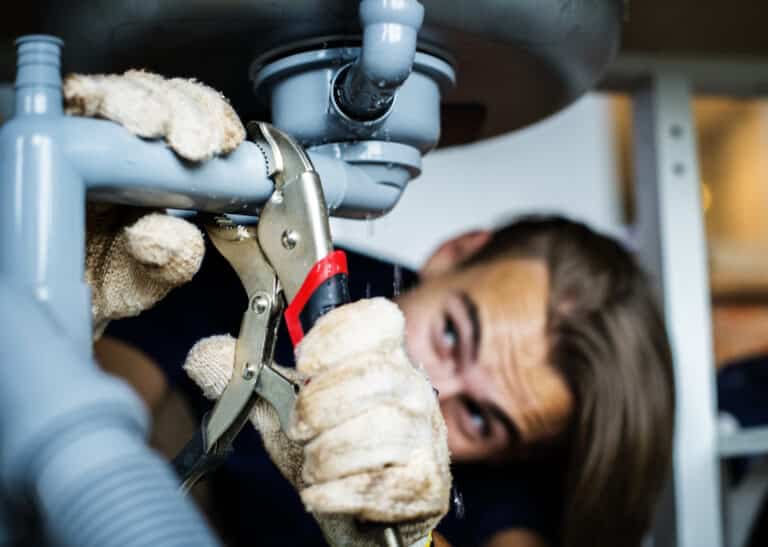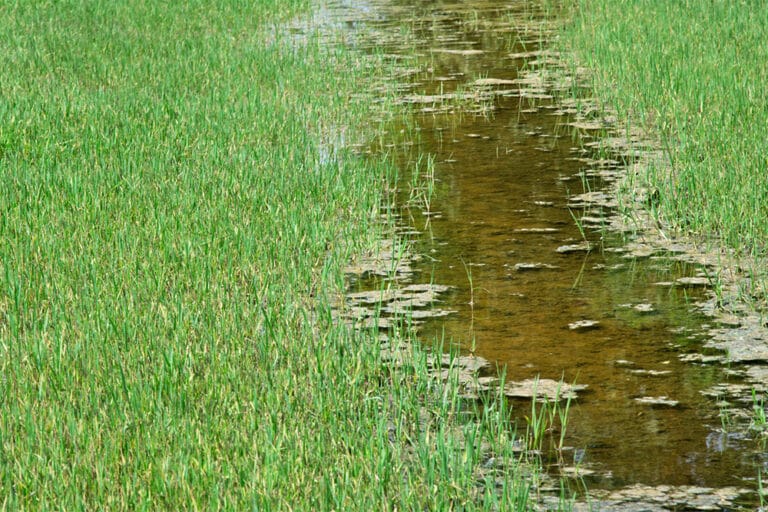Why Drainage Even Matters (Like, a Lot)
First things first: why is drainage such a big deal?
Texas weather is known for two things: blistering heat and surprise storms. That combo can do a number on your property if you’re not prepared. A poor drainage setup doesn’t just leave you with puddles—it can cause:
- Soil erosion
- Cracked or shifting foundations
- Flooded basements or crawlspaces
- Ruined landscaping
- Unwanted pests and mold (yikes!)
Basically, ignoring drainage can turn into a super expensive and super gross problem. The good news? A well-planned drainage system keeps your home (and your sanity) protected.
Know Your Drainage Options
Now, let’s break down your choices. When it comes to drainage systems, you’ve got a few tried-and-true options—and each serves a different purpose.
1. Surface Drainage Systems
These are your visible, above-ground systems. Think of them as the first responders to heavy rain.
Includes:
- Gutters and downspouts
- Channel drains
- Yard swales (shallow ditches that help redirect water)
Best for: Getting rainwater off roofs, patios, and driveways before it has a chance to pool.
Fun fact: Swales can actually look great with a bit of landscaping! Think wildflowers or river rocks.
2. Subsurface Drainage Systems
These babies do their work behind the scenes—underground—to help manage water that’s soaked into the soil.
Includes:
- French drains
- Perforated pipe systems
- Catch basins
Best for: Soggy lawns, pooling water, and protecting your foundation from long-term damage.
Pro tip: If your grass feels squishy underfoot days after it rains, a subsurface system is probably your new best friend.
3. Slope Drainage Systems
Texas isn’t all flat plains—many properties have a natural incline. A slope drainage system uses gravity to send water where it belongs: away from your house.
Includes:
- Grading your yard
- Sloped pipe systems
Best for: Properties with hills or a noticeable grade change.
4. Downspout and Gutter Extensions
These are small but mighty. Think of them as the unsung heroes of roof runoff control.
Best for: Directing rainwater far, far away from your foundation. Seriously, don’t skip this one.
So… Which System Is Right for You?
Let’s get into the nitty-gritty. Picking the right drainage setup depends on a few key factors unique to your property:
Water Flow
Start by watching where the water goes when it rains. Is it pooling by the back door? Running down the driveway? Sitting around the foundation like it owns the place?
Wherever it’s headed, your job is to reroute it to a safer place (preferably downhill and away from your house).
Soil Type
Not all soil is created equal—especially in Texas.
- Clay soil (common in North Texas) holds water like a sponge, which can lead to puddles and mud pits.
- Sandy soil (more common in coastal areas) drains quickly but may erode faster.
The type of soil you have can make or break your drainage system. For heavy clay, consider a French drain. For sandy soil, focus on erosion control and redirection.
Landscaping & Looks
Want your yard to stay Insta-worthy and well-drained? Some systems are more discreet than others. French drains can hide under gravel or grass. Swales can double as landscape features. You’ve got options!
Maintenance Level
Let’s be honest—how much maintenance are you really up for?
- Gutters need regular cleaning.
- Catch basins can clog if not cleared out.
- Grading and pipes? Pretty low-maintenance once installed.
Pick what fits your lifestyle (and your Saturday to-do list).
When to Call in the Pros
DIY can be awesome for certain projects—painting the fence, installing a birdhouse, maybe building a raised garden bed. But drainage? That’s where things get tricky.
If you’re dealing with:
- Persistent flooding
- Cracked foundations
- Water inside your home
- Complicated slopes or large yards
…then it’s time to bring in the experts. Here at Black Tie Plumbing we have helped hundreds of Texas homeowners find the perfect drainage setup—no guesswork, no trial-and-error, just custom solutions that actually work.
Whether it’s a French drain for your marshy backyard or a full underground drainage overhaul, they’ve got the tools, the know-how, and the Texas weather experience to get it right the first time.
Pro Tips to Keep Your Drainage System Running Smoothly
So you’ve got your system in place—great! But don’t forget: even the best drainage setup needs a little love to stay in top shape.
Here’s how to keep things flowing:
- Clean gutters and downspouts at least twice a year
- Remove leaves and debris from surface drains
- Check your grading every couple of years
- Watch for standing water or slow drainage after storms
- Install gutter guards or leaf screens
- Keep plants and roots away from drainage lines
- Smell something funky? Investigate—it could be a clog
- Test the system after heavy rain to catch problems early
Say Goodbye to Backyard Lakes (and Drainage Stress)
At the end of the day, the right drainage system depends on your land’s slope, soil, layout, and how much rain you typically get (and let’s be honest—Texas weather never plays by the rules).
The most important thing? Don’t wait. A small drainage issue today can turn into a cracked foundation or a flooded living room tomorrow.





